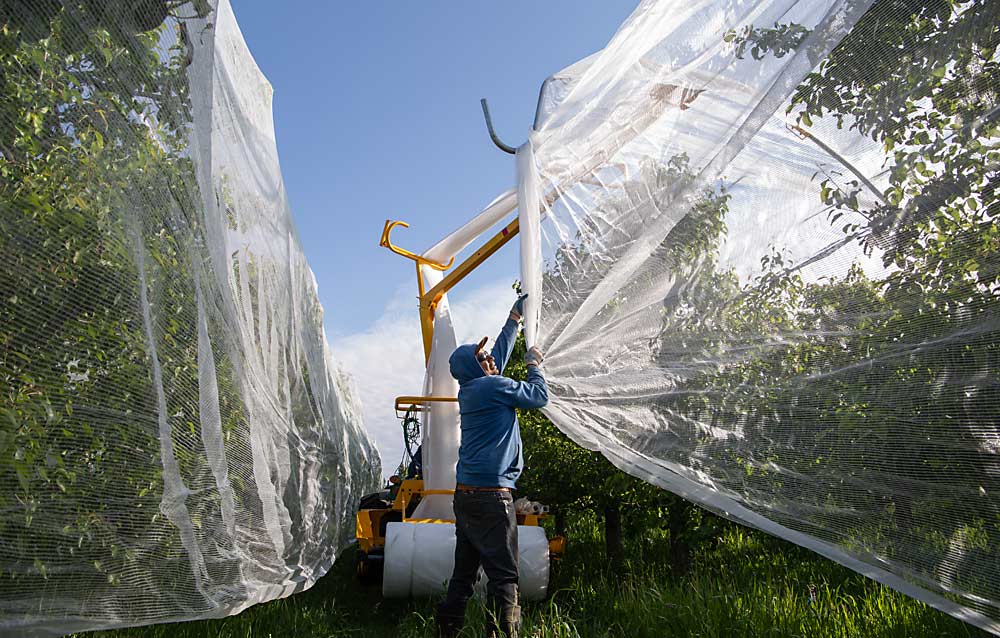
Single-row netting started off as hail protection. Then sun protection. One manufacturer now has a cherry weave for rain protection.
But organic orchardists in the Northwest are now hanging unstructured netting over existing trees for pest control.
Entomology research shows the approach excludes codling moth, but Mount Adams Fruit stretched the porous fabric over about 30 acres of organic pears to keep out brown marmorated stink bug.
In late May, after bloom, crews unfurled the fabric over free-standing, hilly rows at the company’s main ranch in White Salmon, Washington.
Farm manager Tim Pitz hopes for many benefits, such as sun and hail protection. Also, the weight and tension of the fabric bends the top branches, which he hopes will control vigor and make winter pruning easier.
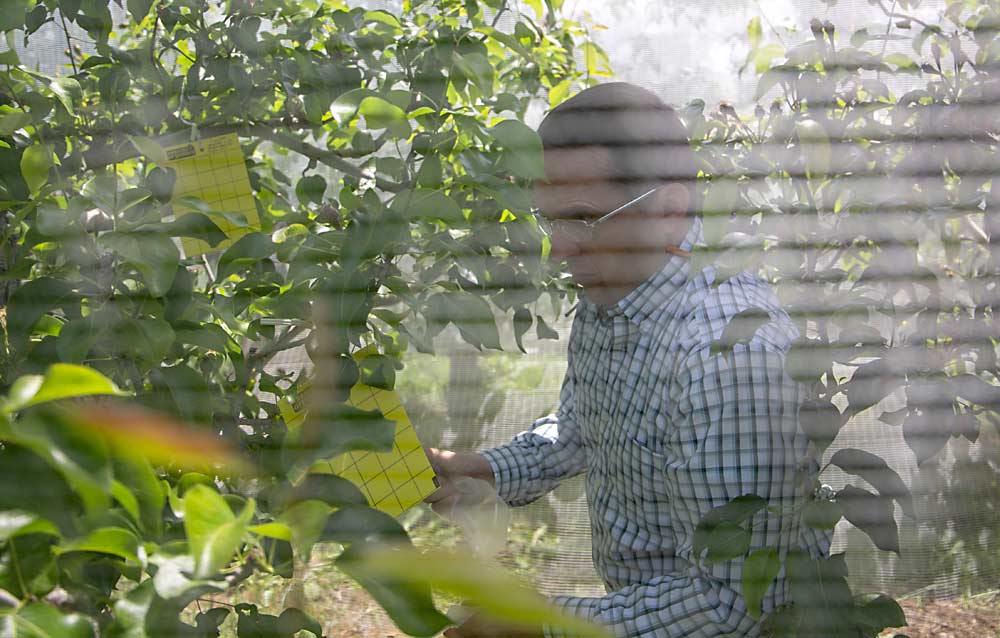
But the investment is all about brown marmorated stink bug, an invasive pest native to Eastern Asia that once caused millions of dollars in damage in Eastern U.S. apple-growing areas before better management strategies were developed.
So far, most of the Northwest’s arid fruit regions have proven less hospitable to the pest, though the verdant Columbia Gorge — an area of the Cascade Range straddling the Columbia River — is a hot spot. The brown marmorated stink bug likes the type of forested land that surrounds Mount Adams’ orchards.
Orchard supervisors have noticed more of the pest since the company logged some of its property in 2021.
“They decided to come hang out in the orchard,” Pitz said.
The company is draping organic Bartletts and Boscs near the logged area and some on-farm housing. The pest also likes to seek refuge on residential structures.
Chris Adams, an Oregon State University entomologist, suspects the netting will work, and he hung traps under Mount Adams’ nets for a population study.
“It’s going to be a very boring study,” said Adams, no relation to the company name. “There is zero chance BMSB are getting into that net.”
Adams, based at OSU’s nearby Hood River, Oregon, research center, also hung traps for codling moth, pear psylla and natural predators.
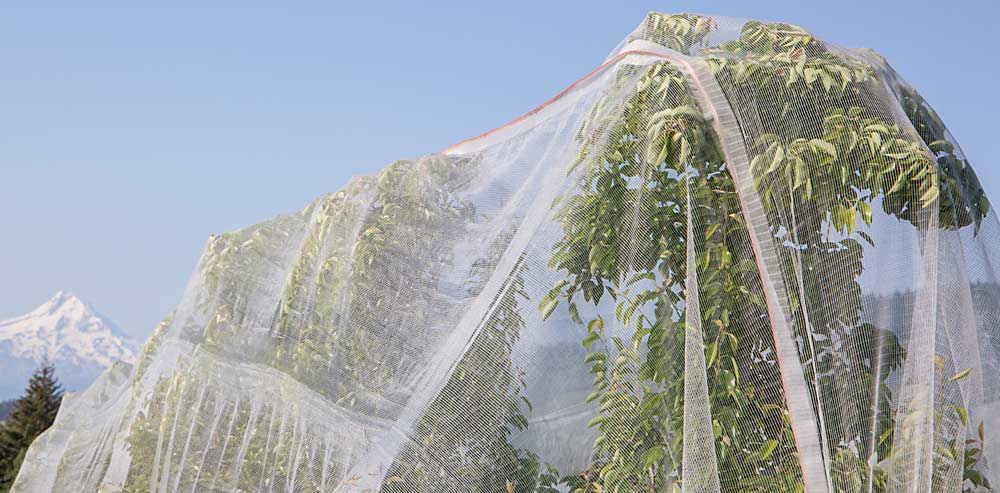
Codling moth studies
Research shows the nets also exclude codling moth, said former U.S. Department of Agriculture entomologist Alan Knight, who has conducted trials in Colorado and Washington. European scientists made the same conclusion as early as 2008, said Knight, now the owner of Instar Biologicals, a pest management research and consulting business in Yakima, Washington.
In a 50-acre organic Honeycrisp orchard in Colorado, a grower reported losing about half his crop to codling moth in 2017 and 2018. In 2019, using netting with organic sprays and mating disruption, the loss fell to less than 1 percent. The grower has since quit spraying altogether, while his neighbors have adopted netting as well.
Last year in trials in Central Washington, Knight studied the effects of codling moth control under single-row netting with different tree canopy structures. The netting always kept moths out, which would save growers the stress of trying to find out where their population keeps coming from year after year.
“Instead of worrying about it, just put netting up,” Knight said.
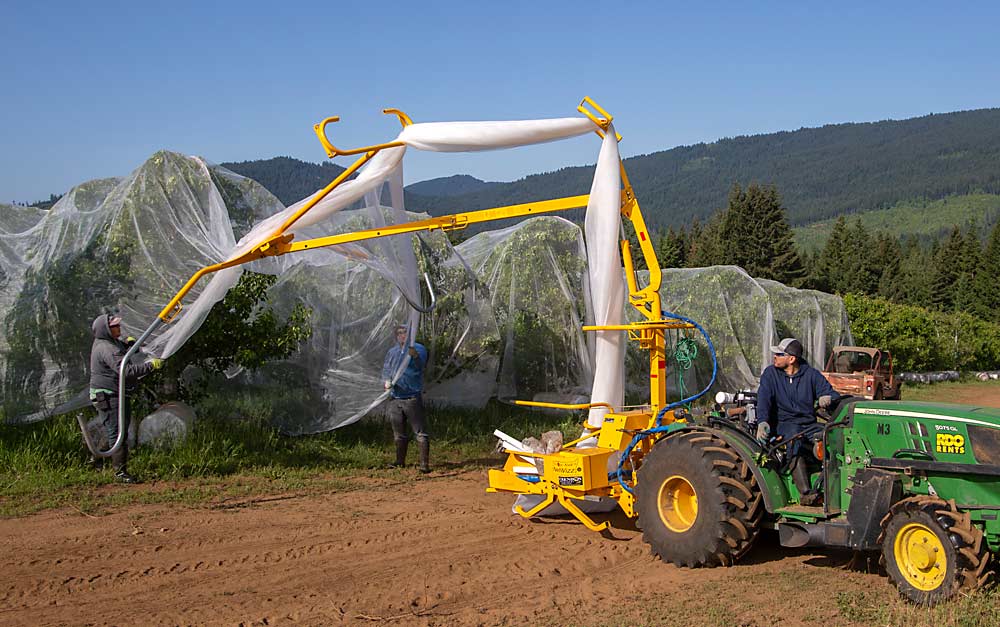
Systems played a role. Moths that were trapped underneath the net over a V-trellis system continued to mate because they had more room to fly, Knight said, leading him to suspect that tightly cinched netting provides its own level of mating disruption, especially on vertical trellis.
He advises growers who plan to use nets to monitor codling moth, especially females, in the block after bloom — to assess the first-generation pest that may be trapped — and to use sprays to knock down that first generation before deploying nets.
Three years ago, Mike Van Horn, a second-generation grower near Zillah, Washington, put drape netting over 5 acres of organic Cripps Pink apples under high codling moth pressure.
He estimates his damage dropped from about 15 percent per year, using mating disruption and virus sprays, to nearly zero, while his spray program decreased from every 10 days to four times per year.
“It’s remarkable,” Van Horn said.
The weave of the fabric is wide enough for sprays to penetrate.
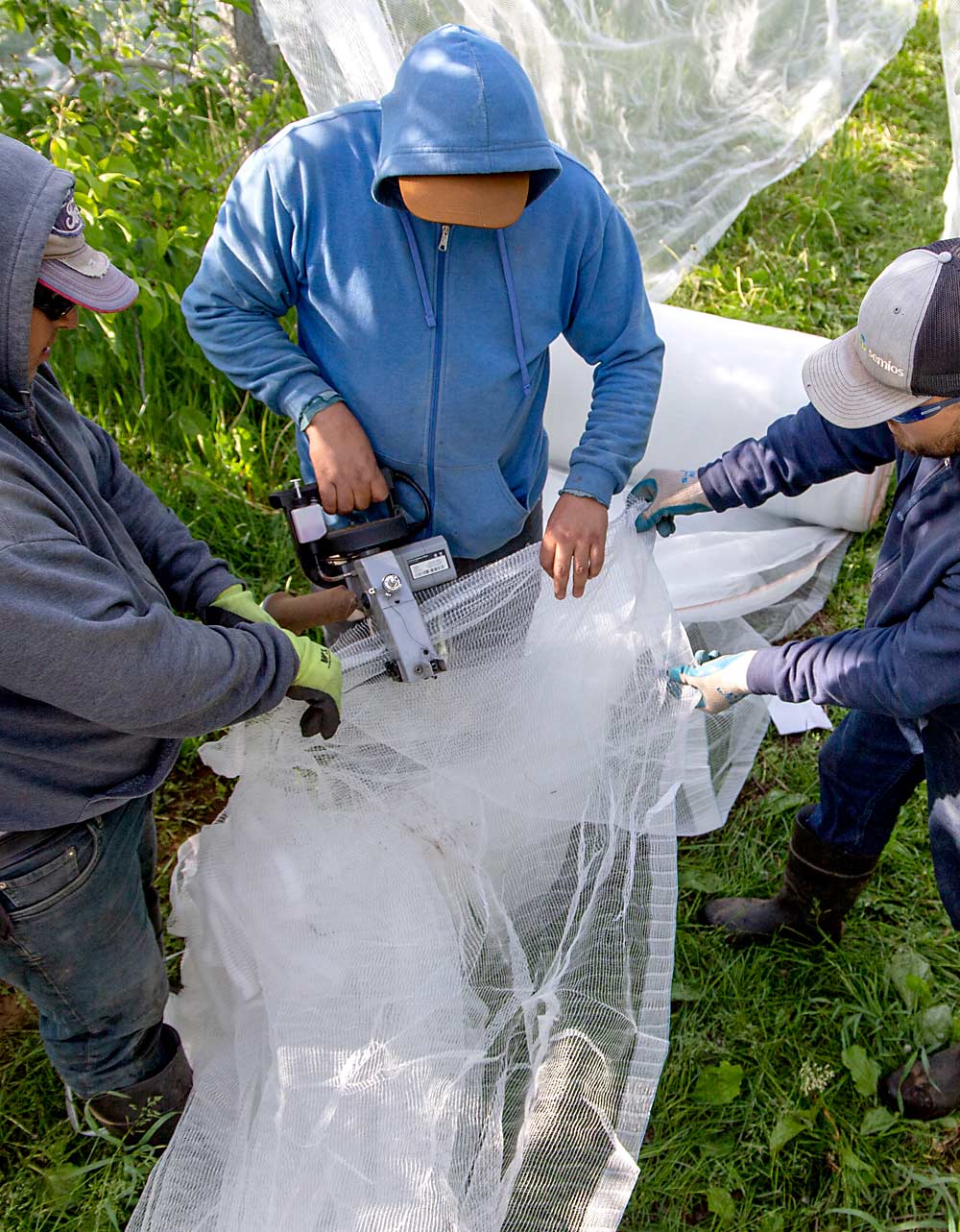
The first fall, he and his workers took down the fabric after harvest, rolled it up and stored it — a labor-intensive chore, he said. Since then, he has added bullhorn posts to the vertical trellis block. He just rolls up the material a few weeks before harvest, to encourage color, leaves it up for the winter, and then drops and cinches it after bloom the next spring.
Randy Kiyokawa, an orchardist in Parkdale, Oregon, covers a few acres each of apples, pluots, plums and cherries with drape netting. He hasn’t measured to see if it excludes insect pests, but it has worked for birds in his cherries, he said.
“It definitely keeps the birds out,” he said.
In his apples, it also provides a visual cue for his U-pick customers to know which rows are ready for picking and which are not.
—by Ross Courtney
Net know-how
Drape Net, founded in Australia 17 years ago as a hail protection strategy, has become one of the leading North American suppliers of single-row netting, which the company pitches as a less expensive alternative to structured netting that stretches across anchored poles. Extenday, a New Zealand company that makes structured netting, reflective fabric and weed mats, also sells netting that hangs over trees.
Every orchard is different, but a rough estimate puts Drape Net’s fabric costs between $3,500 and $5,000 per acre, depending on row density, width of fabric and the type of weave, said Dean Benson, a sales representative based in Prosser, Washington. The company also sells bullhorn brackets for existing trellis posts, which elevate and spread out the fabric like a tent. The brackets would add roughly $3,000 to the per-acre cost, depending on post spacing and type of bullhorn, Benson said.
The company also sells a machine called the Net Wizz, designed by Crendon Machinery of Australia, to install the fabric. It currently costs $25,500 to buy, but growers can also rent it.
Towed behind a tractor, the Net Wizz uses hydraulics and the drag of the netting to spool out the fabric over the rows through a series of hooks and guides. One worker drives, while two others fluff and stretch the material into place on each side and other workers cinch the material under the canopy. To remove the fabric, the boom swivels to operate in reverse, Benson said.
With one machine, a crew of five or six people can install about 3 acres per day the first year, Benson said. Each year after that, with the fabric already cut to length, that would jump to 10 acres.
—R. Courtney

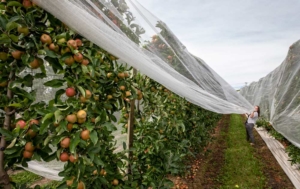
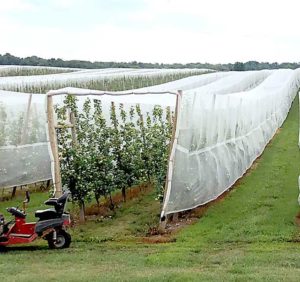
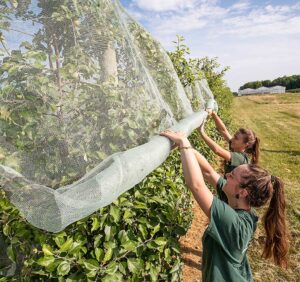
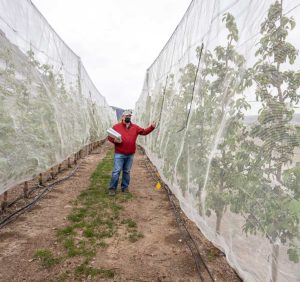





Leave A Comment